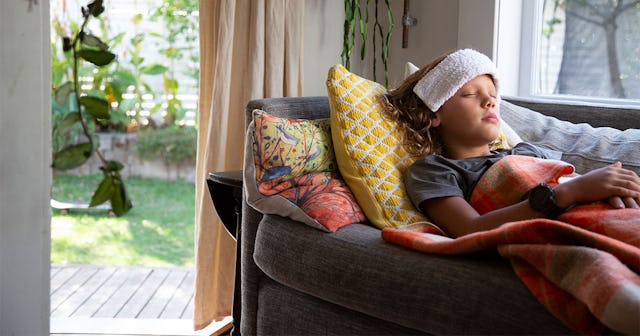New Migraine Treatments For Kids Show Promise

If you have ever had a migraine, you know how debilitating they can be. Lights, sounds, and even smells can trigger this horrible headache that can go on for hours and sometimes even days. But adults aren’t the only ones affected. According to healthychildren.org, 10% of children from 5 to 15 have migraine headaches and 28% of teens get them. Of those children, about 50% have their first migraine headache before the age of 12. What kind of treatment is available to these children?
For years, parents and doctors relied on medication to treat migraines; however, they do not always do the trick. There has been little effectiveness over placebos in adolescents. But cognitive behavior therapies are showing promise in treating a headache at its onset. And a new wearable device is in the works to help sufferers treat their migraine. Cincinnati Children’s hospital has been studying these new strategies and they show promise.
A three-year study, called CHAMP, conducted by Cincinnati Children’s showed that a placebo produced just as much benefit for migraine sufferers as the two most commonly prescribed drugs, topiramate and amitriptyline. Instead of relying on medication, the CHAMP study used behavior therapies to help reduce the pain from migraine headaches.
The 205 teens who participated in the study experienced an average of 11 headaches per month when the study began, and just five per month when the CHAMP study was completed.
“Regardless of treatment group (amitriptyline, topiramate, placebo), youth consistently maintained meaningful reductions of headache days and migraine-related disability for three years after completion of the trial,” the new study states. “Less than 10% of the participants reported ongoing use of prevention medication prescribed as part of typical clinical care, with most participants reporting no medication use at most time points.”
Scott Powers, PhD, Co-Director of the Headache Center at Cincinnati Children’s, said in a statement that it appears that the discontinuation of drugs for long-term prevention of migraine attacks is inherently safe.
“Our findings suggest that the chemicals in the pills likely have little to nothing to do with achieving improved migraine control,” said Powers.
Instead, it was found that consistent results were presented by those participants who practice regular self-care routines. Those who stayed hydrated, got enough sleep, performed exercises regularly and ate meals throughout the day found success in preventing migraine headaches. The study also noted that it might also be possible that participating in CHAMP changed the course of the teens’ brain development (a process that continues until about age 25).
An additional study published in December 2020 in Headache introduced a new wearable device called Nerivio that gives the patient remote electrical neuromodulation at the onset of a headache. The device is currently made by Theranica, an Israel-based company.
Findings from this study helped support U.S. Food and Drug Administration approval in January of Nerivio as a migraine treatment for people aged 12 and up. The patient wears a device on their upper arm that they are able to control with their smartphone. In the early stages of a migraine, the user activated the device for 45 minutes. During that time a mild stimulation signal is sent through the skin and helps to disrupt the migraine from progressing.
The study followed 39 participants who used the device at the onset of a migraine, and of those users, 71% felt relief within two hours. And 35% of participants claimed to be pain free at the two-hour mark. Nausea disappeared for 54% of participants and 40% reported no longer having sensitivity to light and sound.
Of 39 participants who used the device, 71% reported pain relief within two hours and 35% reported being pain-free at that point. About 54% also reported disappearance of nausea while 40% reported disappearance of light and noise sensitivity. Only one participant reported feeling a temporary slight pain from the device.
“To my knowledge, this is the first study that directly compared remote electrical neuromodulation and standard-care treatment options in adolescents,” Hershey says. “Migraine in adolescents is associated with poorer performance and absence from school and social activities during a particularly formative time in life. Providing teens with more effective and engaging treatments for migraine can have far-reaching positive effects over the course of their lives,” Andrew Hershey, MD, PhD, endowed chair and director of neurology at Cincinnati Children’s and co-director of the Headache Center, reported in a statement.
The results for both studies are promising for those children and teens who suffer from migraines, but do not wish to use medications long-term. The evidence strongly suggests that behavior modifications are a great way to help prevent migraine headaches. And once made more widely available, Nerivio will serve as an excellent tool for those at the onset of a migraine headache.